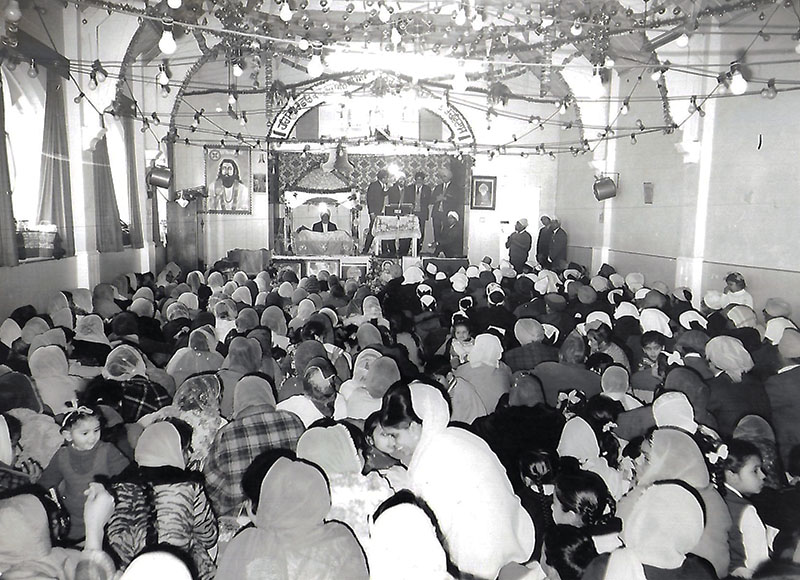For the Community
Early 1960s
Becoming Established
Since there were no backing funds available which were in any reserve account, the Wolverhampton Council was concerned that the community may not be able to afford the rent which was £300 per annum, then a small market trader at that time, named Mr Ram Prakash Paul of village Mansoor Pur gave personal guarantees that the rent will be paid on time, it was then that the building was acquired on lease.
As required, the Temple had to be registered in the Wolverhampton Town Hall, to complete this formality, two well educated gentlemen of the community, Mr Harcharan Dass Soochi Pind(a very prolific speaker on the knowledge of the Adi-Granth and his grand father seth Labhu Ram Ji was in the Ad-Dharam movement 1925/26) and Mr. Amar Chand Mahay, Ghurka (who graduated in English in 1954 at “Ram Gariah” college Phagwara had a very unique and effective style in drafting letters and memorandums ) went straight to the Town Hall after finishing work and getting to the officer- in- charge at the Town Hall.
They met with great disappointment, since the name to be registered was “Shri Guru Ravidass Temple”, he refused to register on the basis that they have never heard of the name “Ravidass”.
Registration
The Doors Open
As they say God works in mysterious ways, Mr Amar Chand Mahay, whose contribution to the cause is indispensable, had come across a translation of the Adi Granth into English, which dated back to the 1800’s by an Englishman called Professor Max Arthur McCaulauffe, a set of six volumes in three editions, each containing 2 volumes. Volume 5/6 had the teachings of all Bhagats, and Guru Ravidass ji’s teachings were there.
Mr Amar Chand Mahay Ji, got back to the Town Hall with the book and encountered the same officer. He pointed at the name of the translator and said he was British and then turned to the page where the teachings of Shri Guru Ravidass Ji started.
The officer humbly took the book, double checked the authenticity and acknowledged the authority of the author. It was after such painstaking effort that the name, Shri Guru Ravidass Temple, 181 Dudley Road Wolverhampton was registered.
If my memory does not fail me, it was in 1966/7 that the building came fully operational. The first birthday commemoration of Satguru Ravidass ji took place in the new building in 1967 but since the building could not accommodate such large gathering, the town centre civic hall in Wolverhampton was hired in 1968.
It continued that way until the temple complex expanded and the community centre opposite the temple was purchased at a cost of approximately £325,000.00. The community showed their support in abundance and contributed generously.
Bearing in mind that the numbers were increasing, and a greater organised structure was needed to be put in place, an efficient administrative team, a well defined role and a sense of direction also was well thought of, it was decided to draft a constitution so that no one ever, whether from this community or outside of it can succeed in hijacking the main fundamental core principal of the organisation.
What powers were given to the President, Vice President, the General Secretary , the Treasurer and the Chairman were clearly defined and no loopholes were left.
The task of drafting the “constitution” was given to Mr Amar Chand Mahay which was completed on 2/6/1968 who along with selected members did a great job, hence the “first chairman” of the constitution had played a very important role in preserving the real objective of the organisation in service to the community.

Mr Amar chand Mahay was working tirelessly all hours with his colleagues devoting time and efforts even at the weekends for the committee.
That is the brief history of the Wolverhampton Sabha and how it evolved, but there are many individuals who had contributed and we have decided to acknowledge them all from memory.
However, the history of the Wolverhampton Sabha would be incomplete without mentioning other key figuresThat is the brief history of the Wolverhampton Sabha and how it evolved, but there are many individuals who had contributed and we have decided to acknowledge them all from memory. However, the history of the Wolverhampton Sabha would be incomplete without mentioning other key figures:
